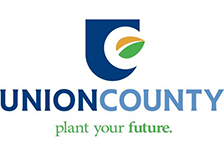Include Edibles in Your Landscape & 4-13 Plant Sale
go.ncsu.edu/readext?595572
en Español / em Português
El inglés es el idioma de control de esta página. En la medida en que haya algún conflicto entre la traducción al inglés y la traducción, el inglés prevalece.
Al hacer clic en el enlace de traducción se activa un servicio de traducción gratuito para convertir la página al español. Al igual que con cualquier traducción por Internet, la conversión no es sensible al contexto y puede que no traduzca el texto en su significado original. NC State Extension no garantiza la exactitud del texto traducido. Por favor, tenga en cuenta que algunas aplicaciones y/o servicios pueden no funcionar como se espera cuando se traducen.
Português
Inglês é o idioma de controle desta página. Na medida que haja algum conflito entre o texto original em Inglês e a tradução, o Inglês prevalece.
Ao clicar no link de tradução, um serviço gratuito de tradução será ativado para converter a página para o Português. Como em qualquer tradução pela internet, a conversão não é sensivel ao contexto e pode não ocorrer a tradução para o significado orginal. O serviço de Extensão da Carolina do Norte (NC State Extension) não garante a exatidão do texto traduzido. Por favor, observe que algumas funções ou serviços podem não funcionar como esperado após a tradução.
English
English is the controlling language of this page. To the extent there is any conflict between the English text and the translation, English controls.
Clicking on the translation link activates a free translation service to convert the page to Spanish. As with any Internet translation, the conversion is not context-sensitive and may not translate the text to its original meaning. NC State Extension does not guarantee the accuracy of the translated text. Please note that some applications and/or services may not function as expected when translated.
Collapse ▲Do you want to grow fruits or vegetables in your home garden, but don’t really have enough space for a dedicated vegetable garden? Consider adding fruits & vegetables to your ornamental beds. Edibles can be grouped with ornamental plants that have similar light, soil, and moisture needs.
You can incorporate tomatoes, peppers, okra, herbs, and small fruits, like blueberries and strawberries into your ornamental beds, as well as dwarf fruit trees. You can make small fruit trees more ornamental by training them using espalier techniques.
Small, low growing vegetables, herbs, and fruit can be planted and used as edging along the front of beds. Lettuce, spinach, carrots, radish, onions, chives, basil, parsley, lavender, and strawberries are some that can be used. Some, such as lettuce, spinach, chives, and parsley will tolerate partial shade. Morning sun and afternoon shade during the hottest part of the day work great for those that will take some shade. Lavender and strawberries pretty much want full sun, so you need to plant them where they receive a minimum of six hours of sun.
Larger vegetables like tomatoes, peppers, and okra need full sun and sufficient space to grow. You can train your tomatoes onto an ornamental trellis instead of using a tomato cage. Peppers and okra don’t need support, so plant them in groups of 3-5 like you might plant other perennials.
Blueberries even though they are deciduous, are great all-season plants in the landscape. They prefer full sun, acid soil, and will tolerate some shade, though they produce more fruit when planted in full sun. I love these plants because they provide year-round interest. They flower in spring, produce fruit for you (and the wildlife!) in the summer, and their leaves turn a beautiful burgundy in the fall. In late winter the new twig growth is a showy reddish color.
Be sure to stop by the Extension Master Gardener℠ Volunteer Spring Plant Sale this Saturday, April 13, 2019, from 9 a.m.–1 p.m. They will have tomatoes, peppers, as well as a selection of herbs, fruits, perennials, shrubs, & trees.




